Featured Images
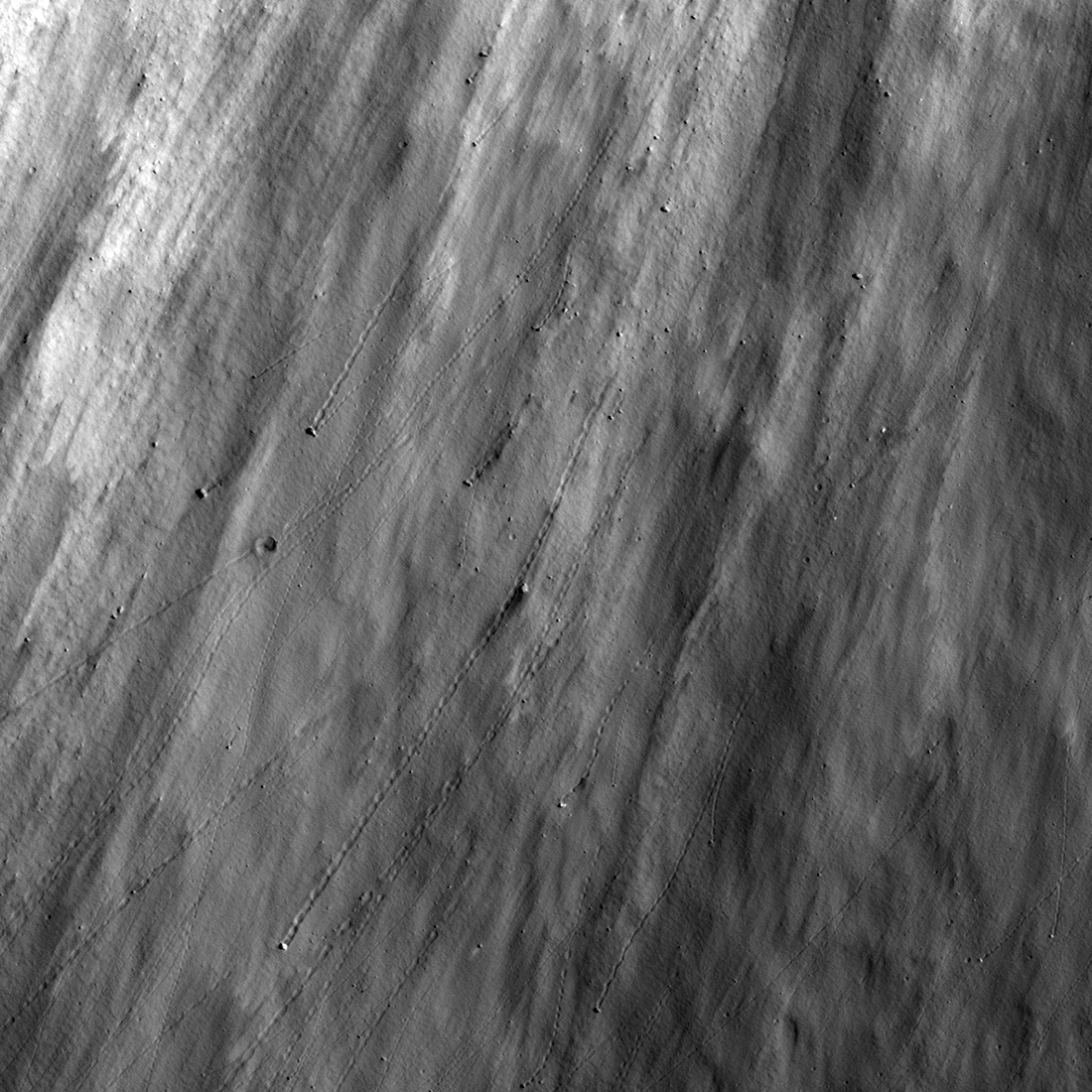
Boulder Tracks: Race to the Bottom of Chaplygin Crater!
Boulders ejected from Chaplygin B crater rolled down the wall of the much larger Chaplygin crater (4.1ºS, 151.7ºE) leaving these spectacular tracks. Image 980 meters wide, north is up [NASA/GFSC/Arizona State University].
Published on 15 Jul 2021
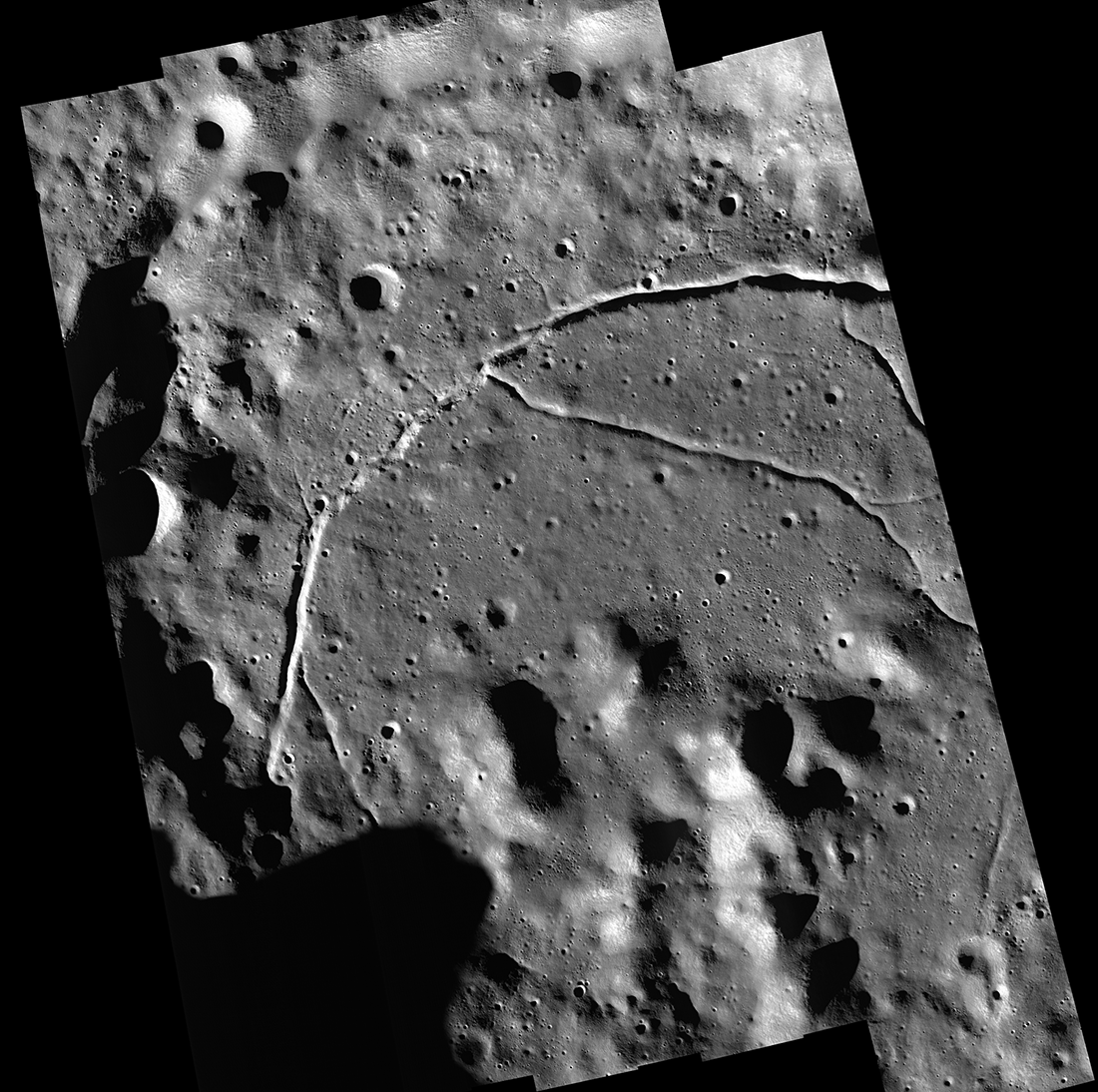
Feature Mosaics: Behind the Seams
A seamless mosaic of a portion of Karpinsky crater (91 km diameter, 72.61° N, 166.80°E) seamless mosaic. Scene is 55 km across, NAC images M1309496597L/R, M1309503618L/R, M1309510644L/R, M1309517669L/R, and M1309524696L/R...
Published on 16 Mar 2020

Cool Cold Spots
Oblique (very!) view of Einthoven cold spot crater, located at 109.91° E, 6.74° S. White rays and the crater's rocky rim and rugged interior wall are visible signs of youth. The cold spot anomaly surrounding the crater is another sign...
Published on 21 Aug 2018
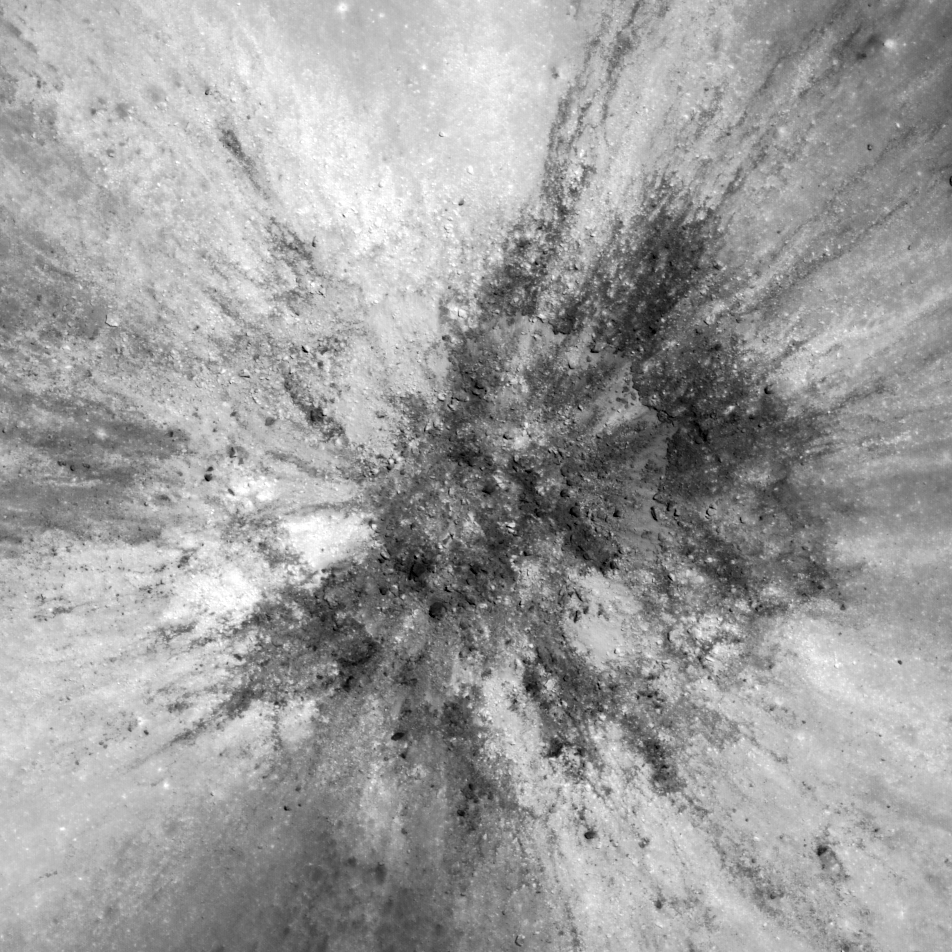
John Young at South Ray Crater
Overhead view of South Ray crater, the most prominent feature at the Apollo 16 Descartes landing site in the central lunar highlands. Astronaut John Young landed Lunar Module Orion north of the crater on 21 April 1972 (UTC)....
Published on 05 Jul 2018
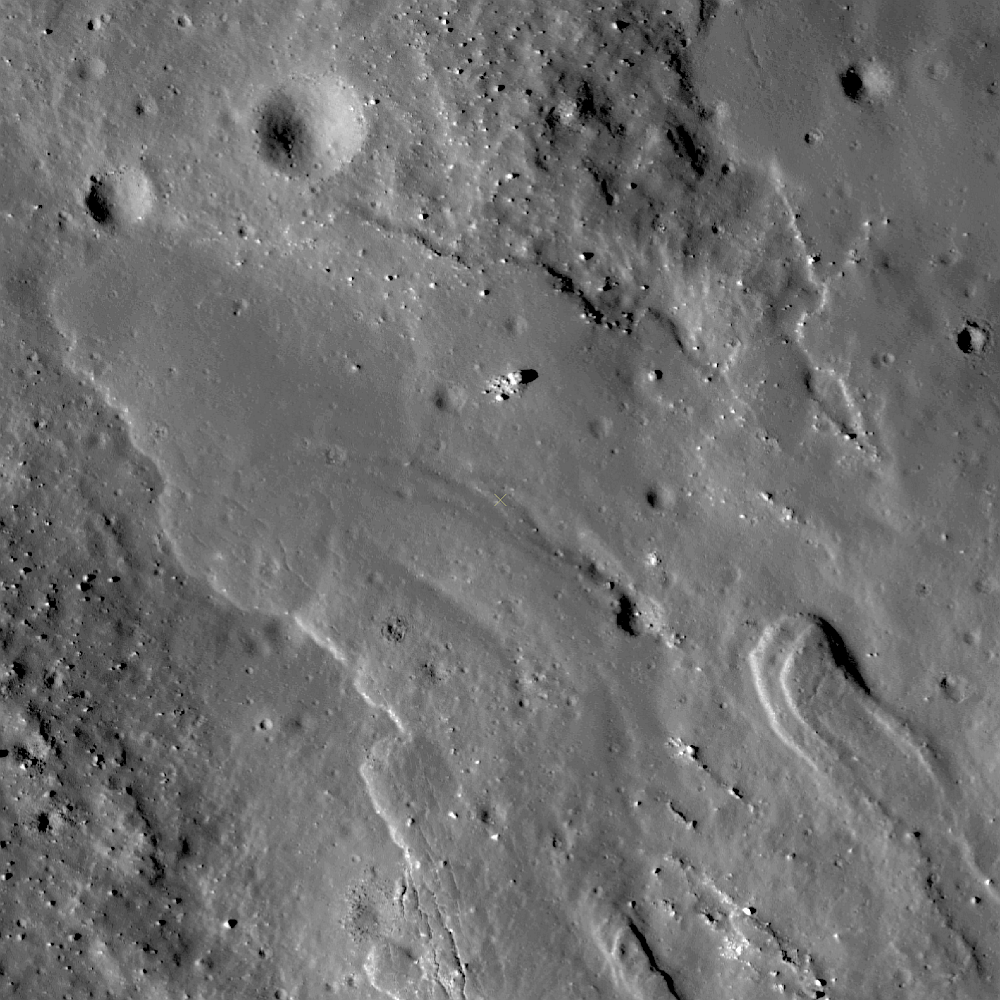
Self-Inflicted Secondaries?
This portion of an impact melt flow at Aristarchus Crater, centered at 24.6°N, 321.1°E, includes modified small craters and overlapping melt flows. What do the shapes of craters on impact melt and the statistics derived through careful...
Published on 30 Jun 2018
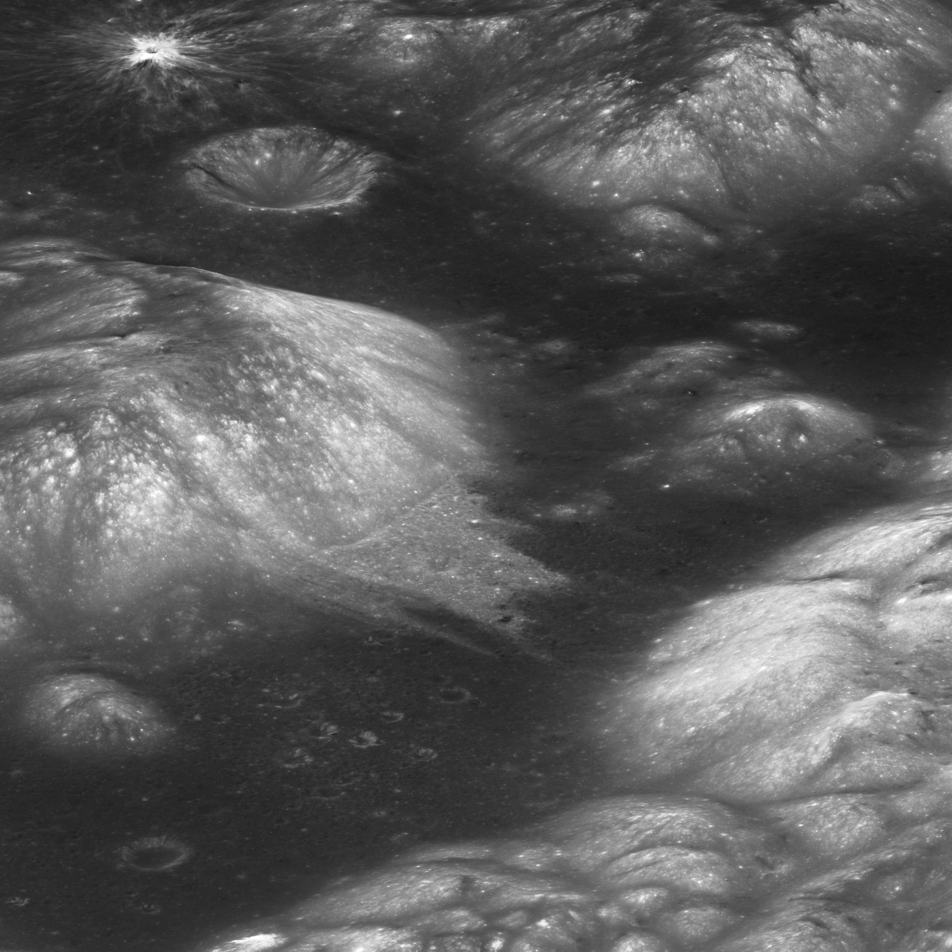
Curiously Fast Degradation of Small Lunar Craters
Taurus-Littrow valley, geologic exploration target for Apollo 17 and the Lunar Reconnaissance Orbiter Camera study team led by Dr. Prasun Mahanti. Center latitude 20.15°N, center longitude 30.98°E, image 18 km wide, image...
Published on 24 Apr 2018

NAC Anaglyph: Secondary crater in Mare Australe
Secondary crater in Mare Australe. The bright spot to the west is a small, fresh 100 meter impact crater. [NASA/GSFC/Arizona State University].
Published on 07 Jul 2017
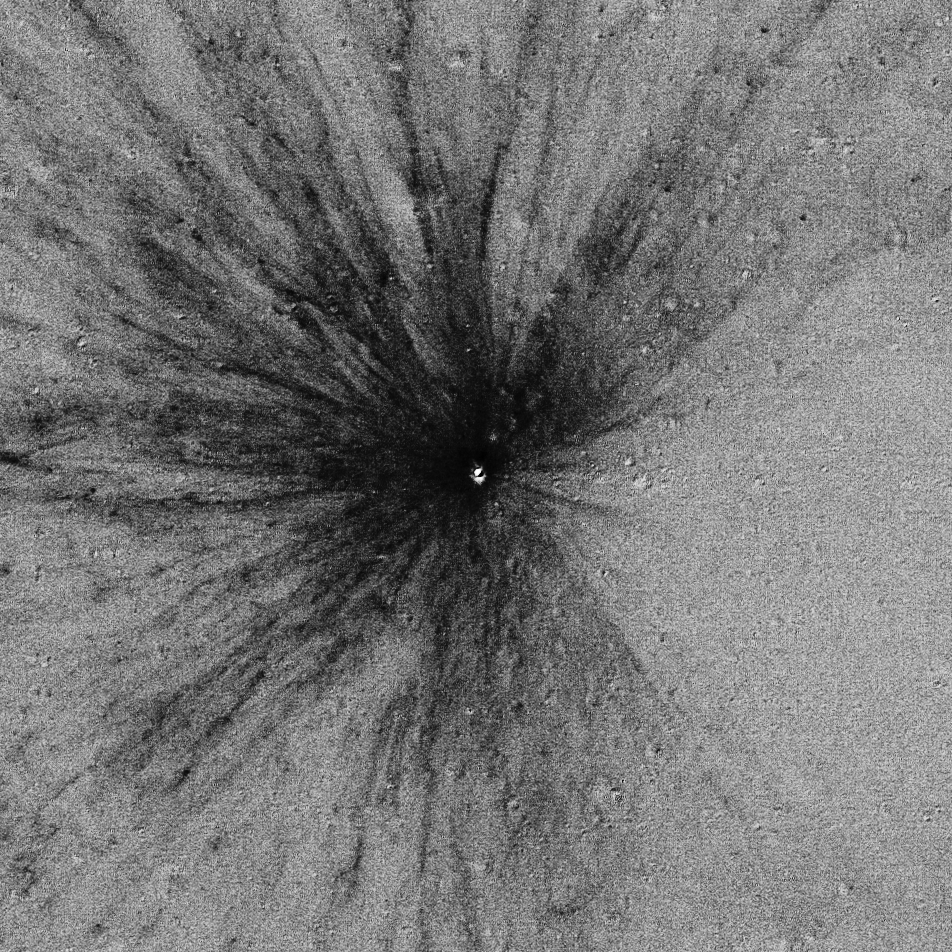
Dynamic Moon!
A brand new crater on the Moon! This new 12 meter (39 foot) diameter impact crater formed between 25 October 2012 and 21 April 2013 and was discovered in a temporal ratio image (after/before) created from two Narrow Angle Camera (NAC)...
Published on 12 Oct 2016
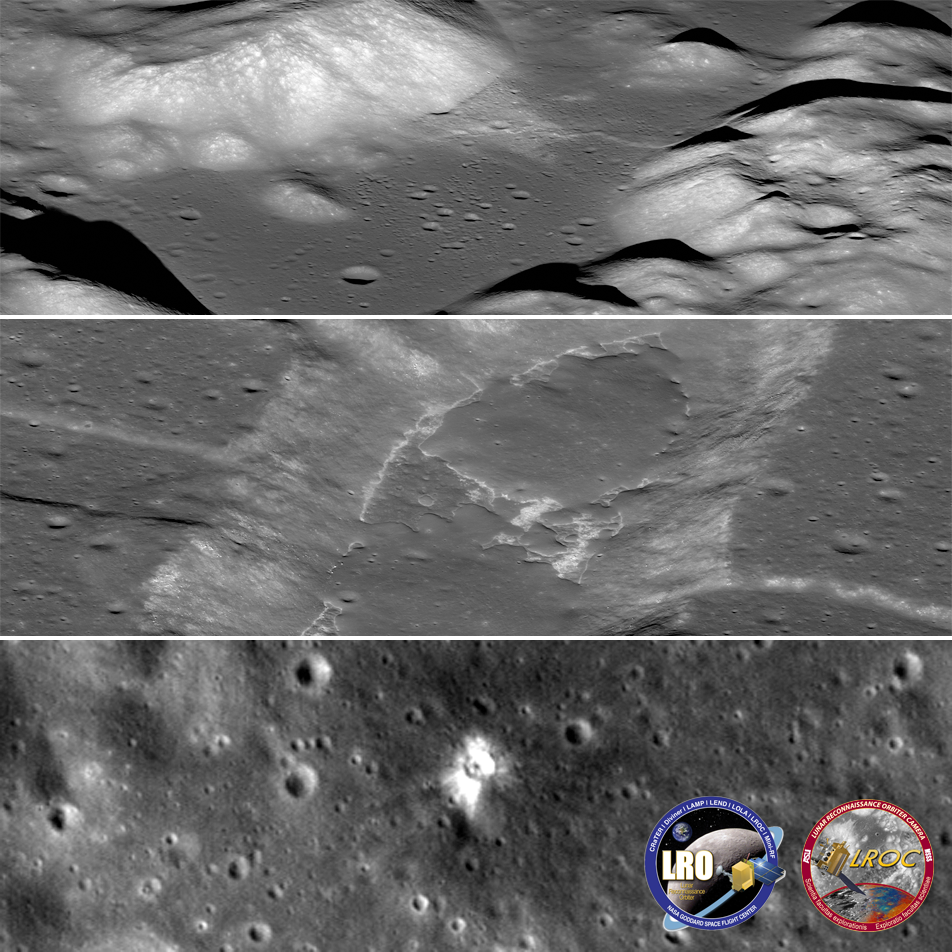
What's Next for LRO?
LRO and LROC will continue to explore the Moon during the mission's third extended mission to understand fundamental processes that shape our Solar System.
Published on 22 Aug 2016
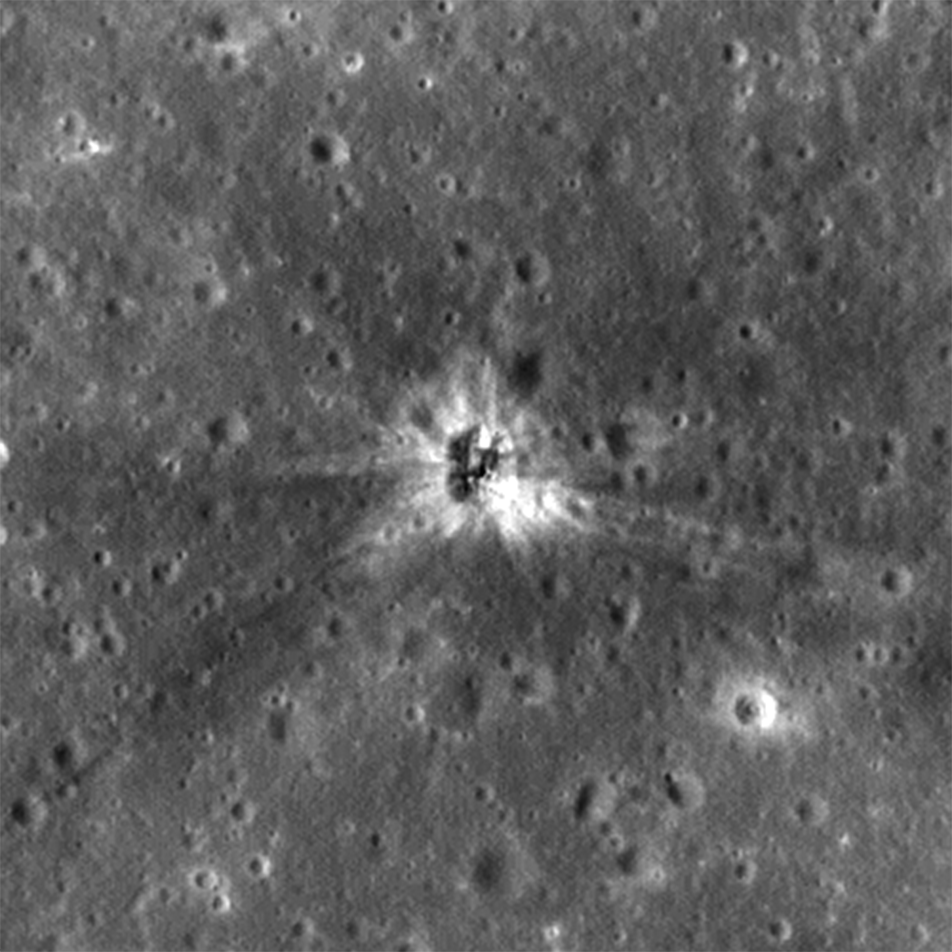
Found! Apollo 16 S-IVB Impact Crater
Newly discovered Apollo 16 S-IVB stage impact crater, image is 400 m wide, north is up (M183689432L)
Published on 02 Dec 2015
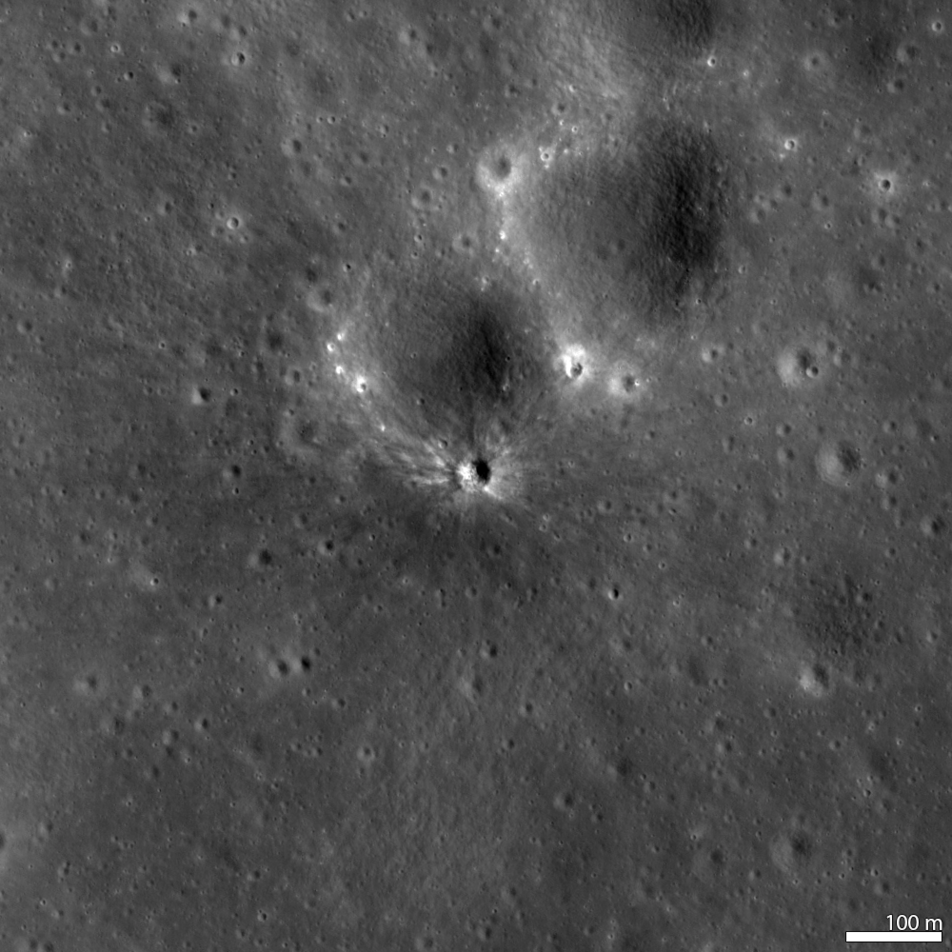
Another New Crater!
A new crater on the Moon! The bright flash of formation for this ~34 meter diameter crater was captured by an Earth based telescope on 11 September 2013. LROC M1151993656L, image is 1000 m wide [NASA/GSFC/Arizona State University].
Published on 15 Sep 2014
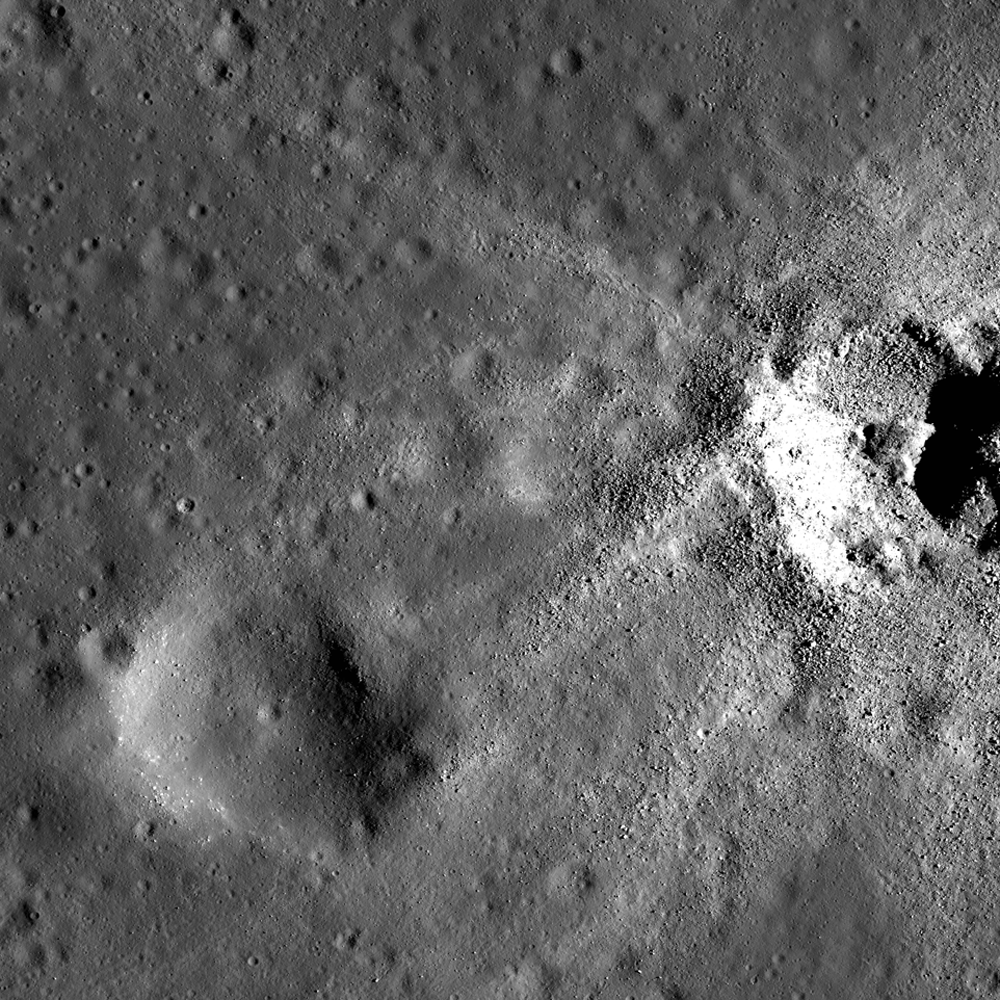
Rockin' Autumni
LROC NAC image (M114498609) of a blocky 600-m fresh crater within Lacus Autumni in the Orientale basin [NASA/GSFC/Arizona State University].
Published on 26 Mar 2014
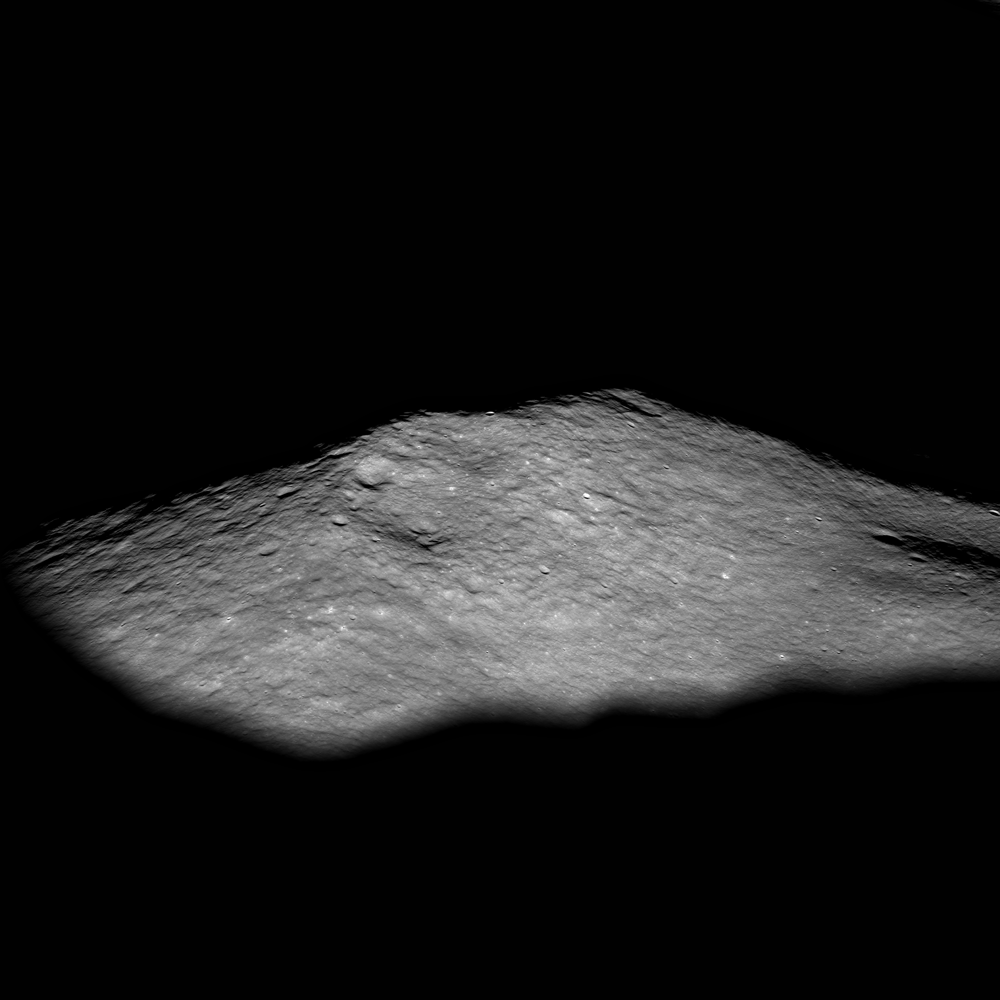
Taking a Peek at Icarus
The central peak of Icarus crater rising out of the shadows to greet a new lunar day! Image width is approximately 10 km, north is to the right, LROC M1124685518 [NASA/GSFC/Arizona State University].
Published on 20 Feb 2014
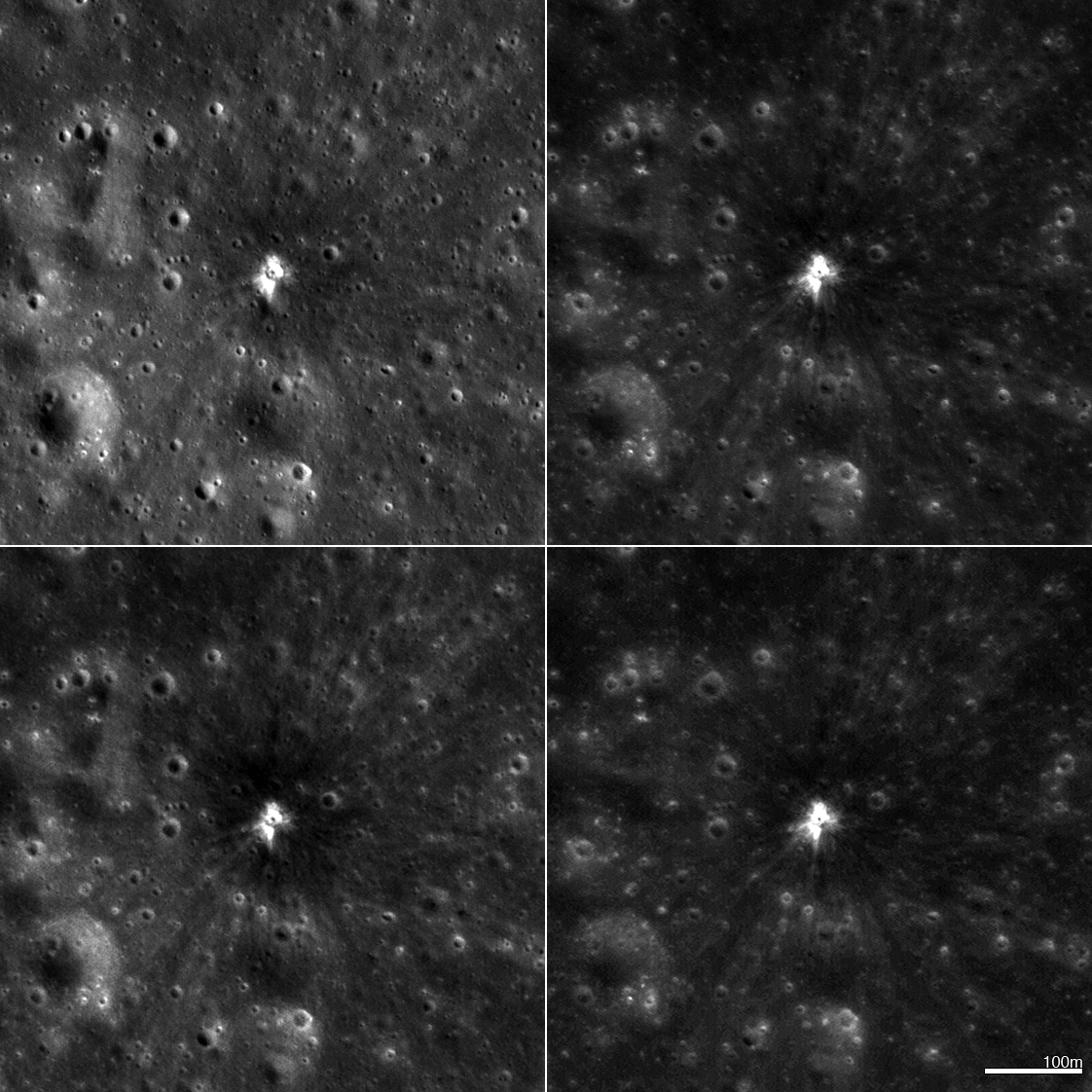
New Crater!
Four different NAC images of crater (18 meter diameter) formed on the Moon, 17 March 2013, each scene is 560 meters wide, north is up [NASA/GSFC/Arizona State University].
Published on 14 Dec 2013
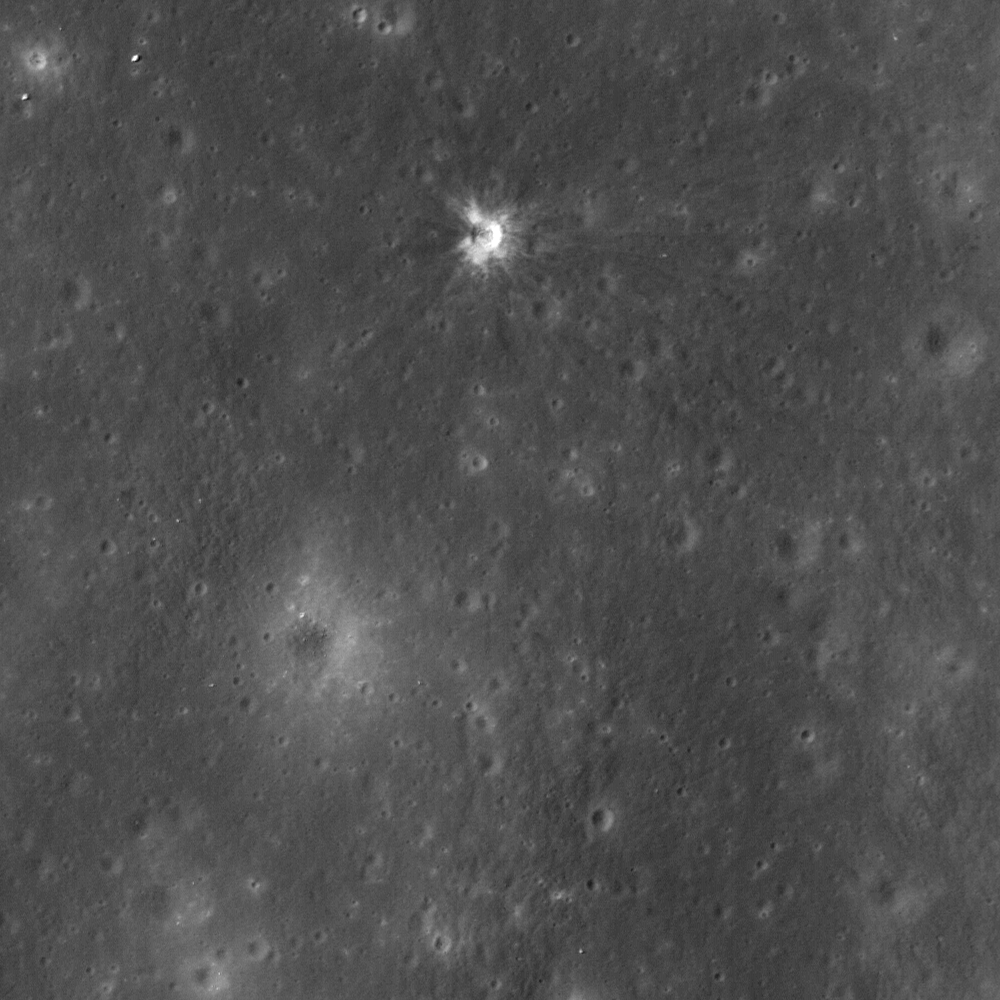
Making an Impact on History
LROC NAC image (M153014430L) of the Ranger 7 impact crater (bright crater near top center) in Mare Cognitum located at 339.323°E, 10.634°S. The crater is 14 meters in diameter; image width is 400 m. [NASA/GSFC/Arizona State University].
Published on 07 Nov 2013
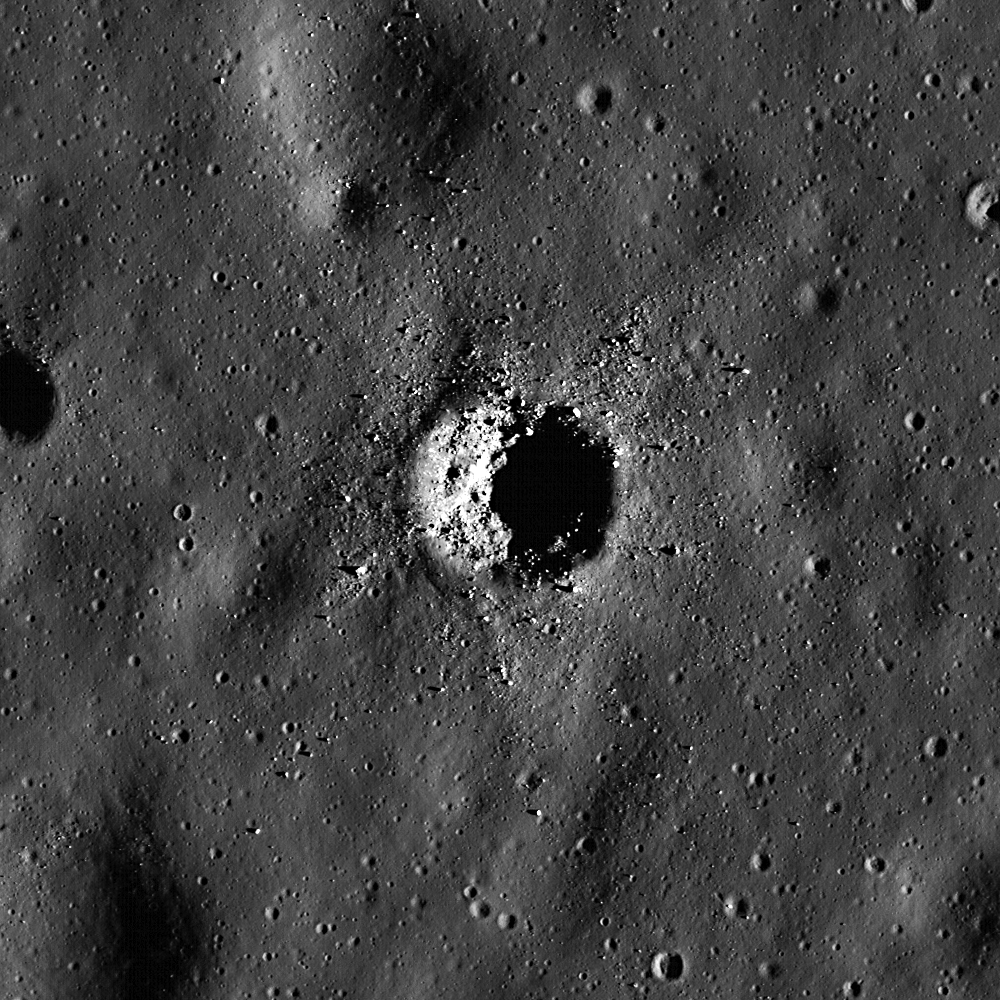
Regolith all the way down?
A small crater hides a bench of bedrock within its walls. Boulders sit just outside the rim. LROC NAC M1624467033R, image width is 800 m [NASA/GSFC/Arizona State University].
Published on 05 Jun 2013
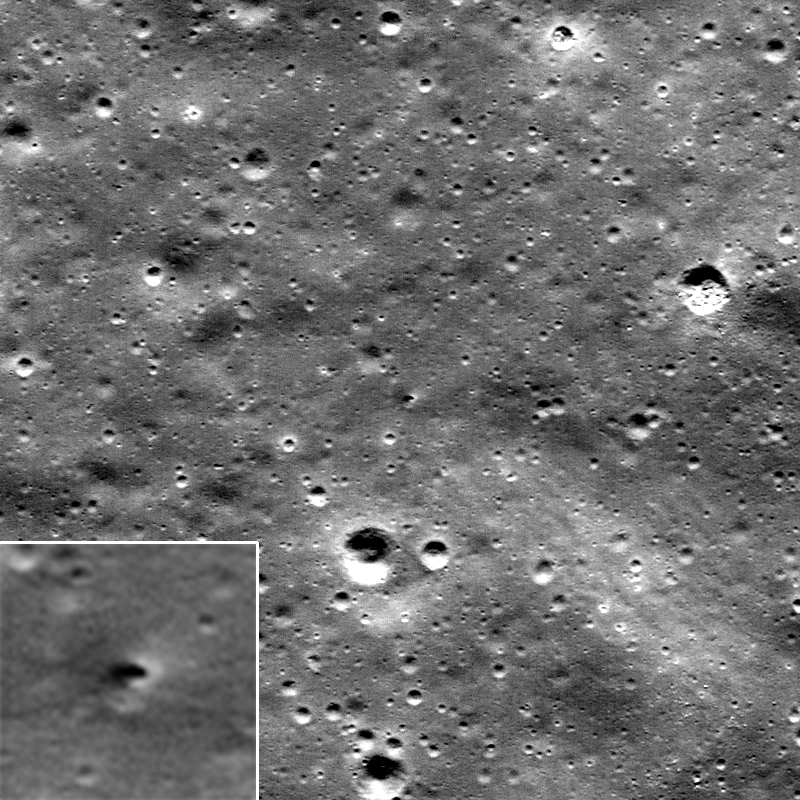
March of Time
Small white blotch with black center (in center of image) is likely a new impact crater formed during the LRO mission. Inset in lower left (38 meters wide) shows 4x enlargement. NAC M1117799545, 480 meters wide [NASA/GSFC/Arizona State...
Published on 20 May 2013
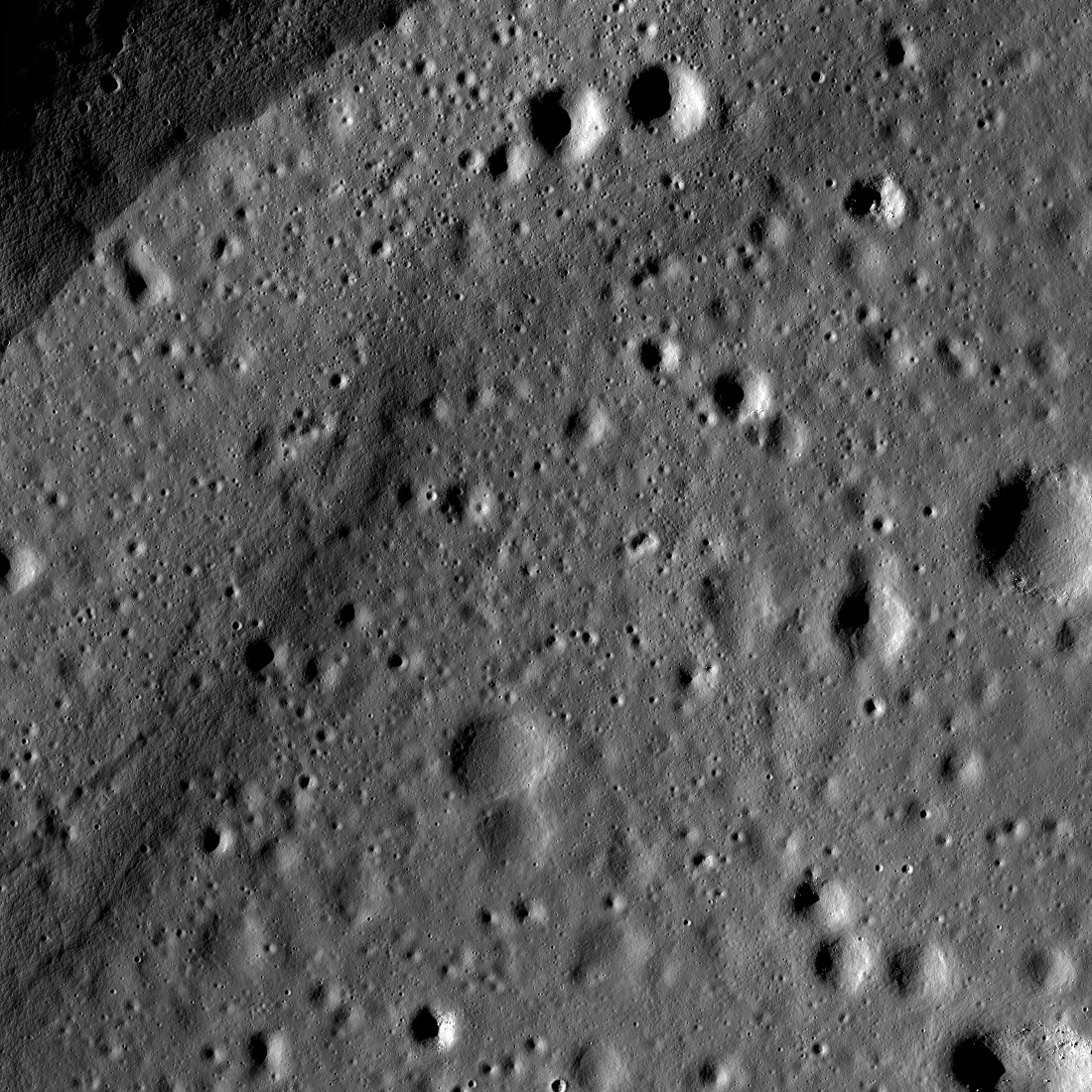
New Views of Bowditch
A lava terrace within the farside crater Bowditch. LROC NAC M180493674L, image width is ~4 km [NASA/GSFC/Arizona State University].
Published on 18 Apr 2013
Dark Secondary Crater Cluster
A collection of dark-haloed craters lines a sloping crater rim outside Sklodowska crater (19.21°S; 93.56°E). North is up; illumination is from the west-southwest, downslope is toward the east, image is ~625 m across, LROC NAC...
Published on 25 Sep 2012
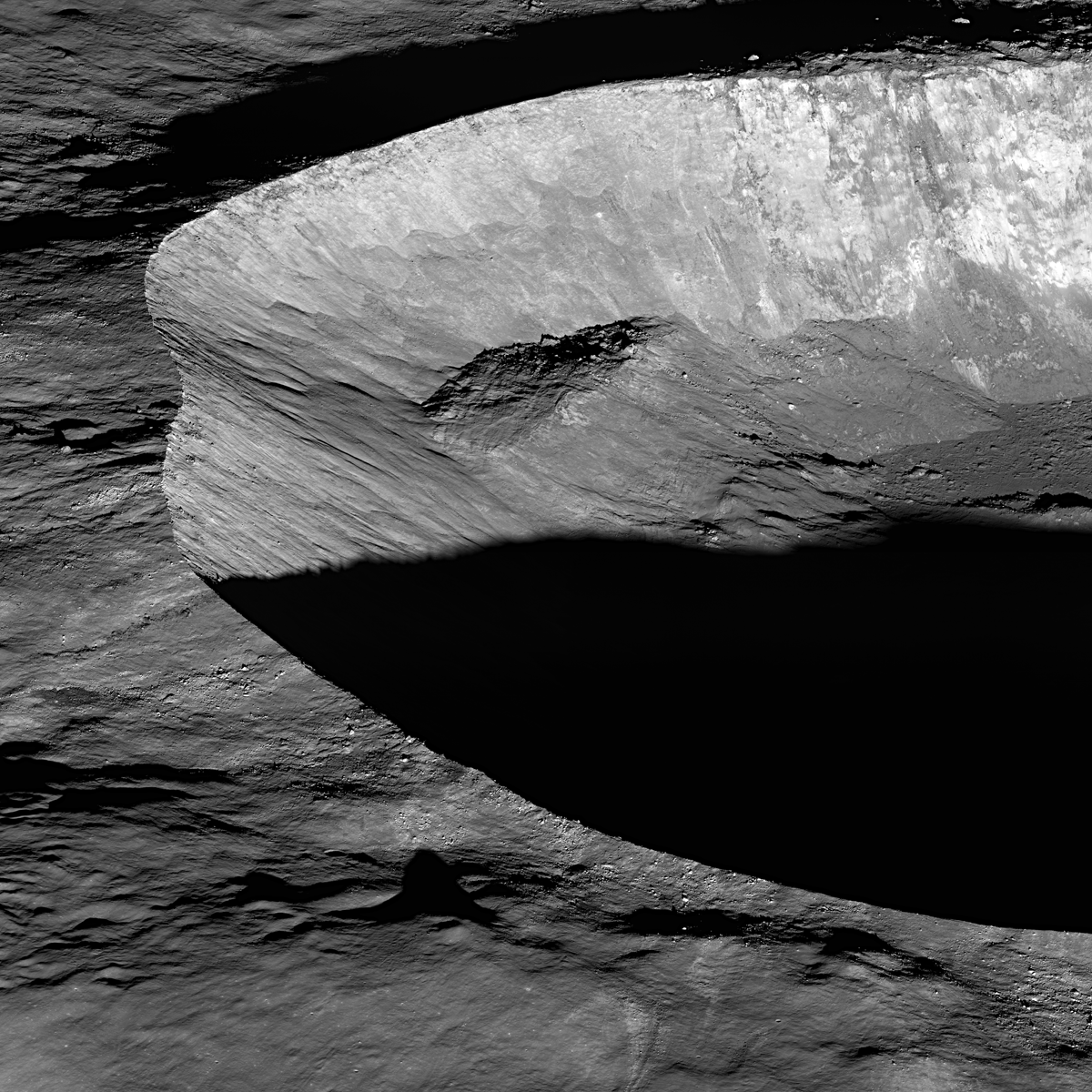
Sunset Over Giordano Bruno
Slump terrace in the northern half of Giordano Bruno crater seen at sunset, from an altitude of 54 km. Terrace is 4800 meters wide, NAC M165190579LR [NASA/GSFC/ Arizona State University].
Published on 06 Jul 2012